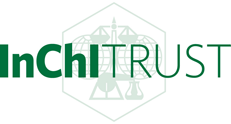The key publication to read and cite is “InChI, the IUPAC International Chemical Identifier” (Stephen R Heller, Igor Pletnev, Stephen Stein and Dmitrii Tchekhovskoi, J. Cheminformatics, 2015, 7:23)
For the best survey of InChI use and publications, please read Wendy Warr’s excellent summary article “Many InChIs and quite some feat” (Warr, W.A., J. Comput. Aided Mol. Des., 2015, 29: 681. https://doi.org/10.1007/s10822-015-9854-3)
How to get involved
There are a number of existing InChI Working Groups run by the IUPAC InChI Subcommittee. For details see http://www-jmg.ch.cam.ac.uk/inchi/
We welcome proposals for InChI enhancements as well as technical questions, bug reports and queries, or even offers of help – please use the SourceForge inchi-discuss list as a forum.
Please register via the SourceForge web page (https://lists.sourceforge.net/lists/listinfo/inchi-discuss). Messages to the list (at [email protected]) from unregistered participants are moderated. The SourceForge project (see http://sourceforge.net/projects/inchi) aims to enable and encourage development of facilities and applications in an Open Source context.
These few general questions and answers about the InChI standard are supplemented by an extensive technical FAQ that is available here.
What is InChI?
Originally developed by the International Union of Pure and Applied Chemistry (IUPAC), the IUPAC International Chemical Identifier (InChI) is a character string generated by computer algorithm. It is a tool to be used in software applications designed and developed by those who choose to use it.
The InChI algorithm turns chemical structures into machine-readable strings of information. InChIs are unique to the compound they describe and can encode absolute stereochemistry making chemicals and chemistry machine-readable and discoverable. A simple analogy is that InChI is the bar-code for chemistry and chemical structures.
The InChI format and algorithm are non-proprietary and the software is open source, with ongoing development done by the community. A number of IUPAC working groups are currently extending the standard for areas of chemistry that are not yet handled by the InChI algorithm.
What is the InChIKey?
The InChIKey was designed so that Internet search engines can search and find the links to a given InChI.
To make the InChIKey the InChI string is subjected to a compression algorithm to create a fixed-length string of upper-case characters. While the InChI to InChIKey hash compression is irreversible, there are a number of InChI resolvers available to look up an InChI given an InChIKey.
Why do we need the InChI and what is it used for?
InChIs and InChIKeys are used by scientists, publishers and database providers to enable web-based linking between sources of chemical content whether web-page, journal or magazine, or database.
For the best survey of InChI use and publications, please read Wendy Warr’s excellent summary article “Many InChIs and quite some feat” (Warr, W.A., J. Comput. Aided Mol. Des., 2015, 29: 681. https://doi.org/10.1007/s10822-015-9854-3)
Where can I download the InChI software?
The most current InChI software release can be downloaded from the GitHub.
History of InChI
1999: Steve Heller initiated a proposal at the National Institute of Standards and Technology (NIST) for a public domain structure representation standard for the NIST databases, along with Steve Stein who was the initial designer and architect for the project.
2000: from a meeting with a wide range of users of chemical nomenclature including database providers, patent officials, international trade representatives, et al, under the direction of Alan McNaught, it was decided that InChI would be an IUPAC initiative to meet the needs of the chemical and related communities.
2001: the IUPAC Chemical Identifier project began in collaboration with the US National Institute of Standards and Technology (NIST). The aim was to devise a computer based algorithm yielding a unique label for any chemical structure, regardless of how it was represented (on screen).
2005 (April): version 1 of the IUPAC International Chemical Identifier (InChI) was launched. The development and associated programming work was predominantly carried out by Dmitrii Tchekhovskoi.
2008: a shorter hash key version of InChI, known as InChIKey was developed by Igor Pletnev. This alternative format is much more suitable for use in search engines and offers many new possibilities for software applications.
2009 (January): standard versions of InChI and the InChIKey were released, which took the original algorithm with its many variable parameters and fixed them so that interoperability between databases and resources with InChIs could be achieved.
2009 (July): the InChI Trust was formed. The 2009 Board of Directors consists of 8 members: The Royal Society of Chemistry • Nature Publishing Group • Elsevier Properties SA • Thomson Reuters • John Wiley & Sons • FIZ CHEMIE • Taylor & Francis • IUPAC.
2011: version 1.04 of the InChI software was released as well as an InChI Certification Suite which is designed to check the correct installation of the InChI software. Certification logos for correct installations as well as InChI Trust member and supporter logos are provided by the InChI Trust.
2017: version 1.05 of the InChI software was released, along with version 1.00 of the Reaction InChI (RInChI).
2020: version 1.06 of the InChI software was released.
2024: InChI codebase moved to GitHub, and the new 1.07beta made available for testing.
